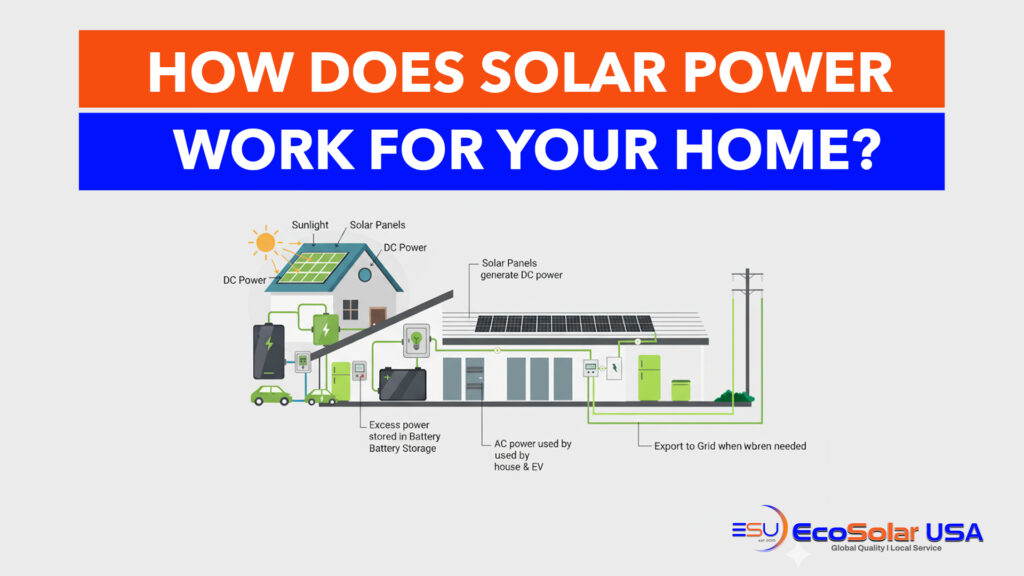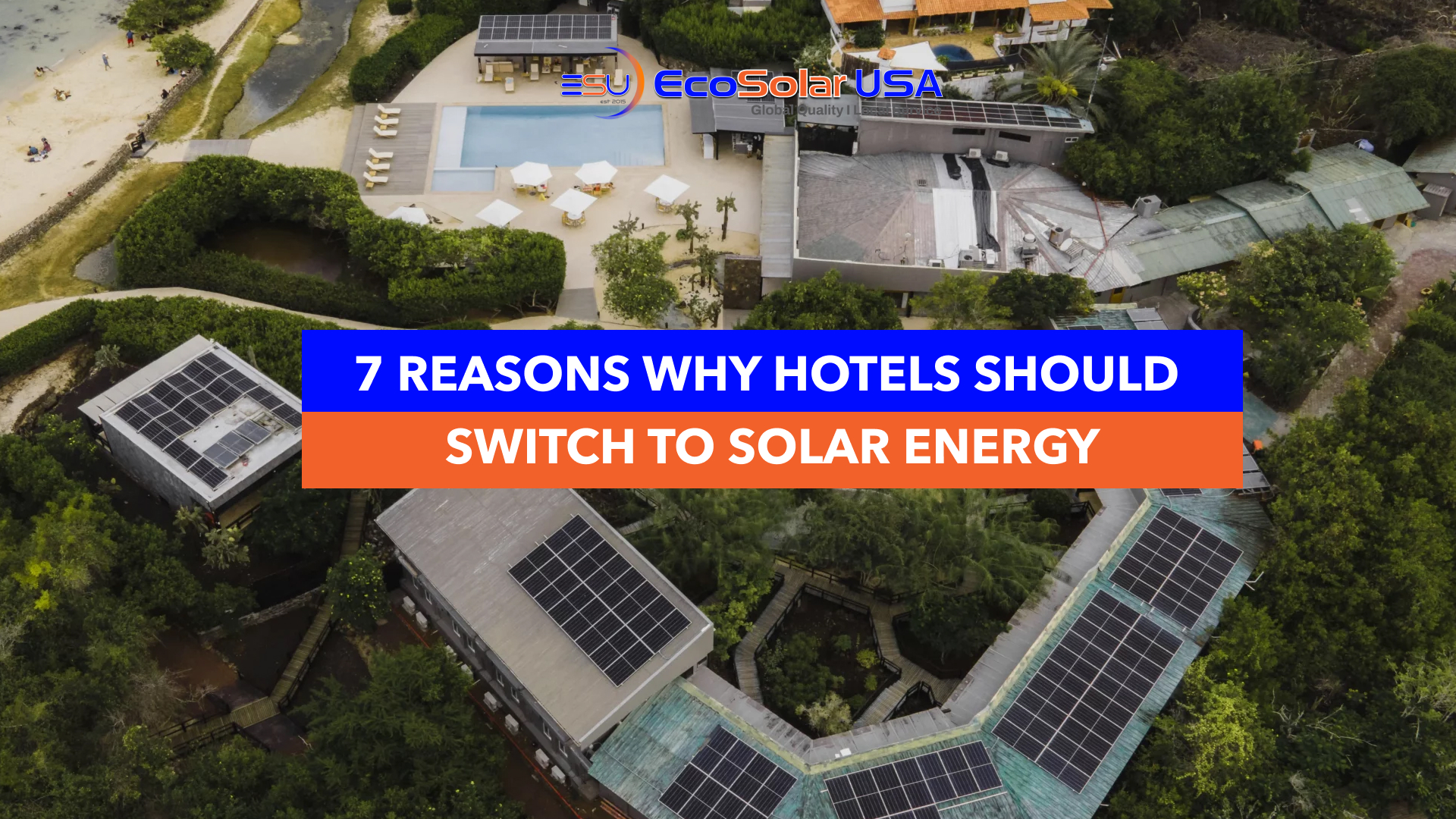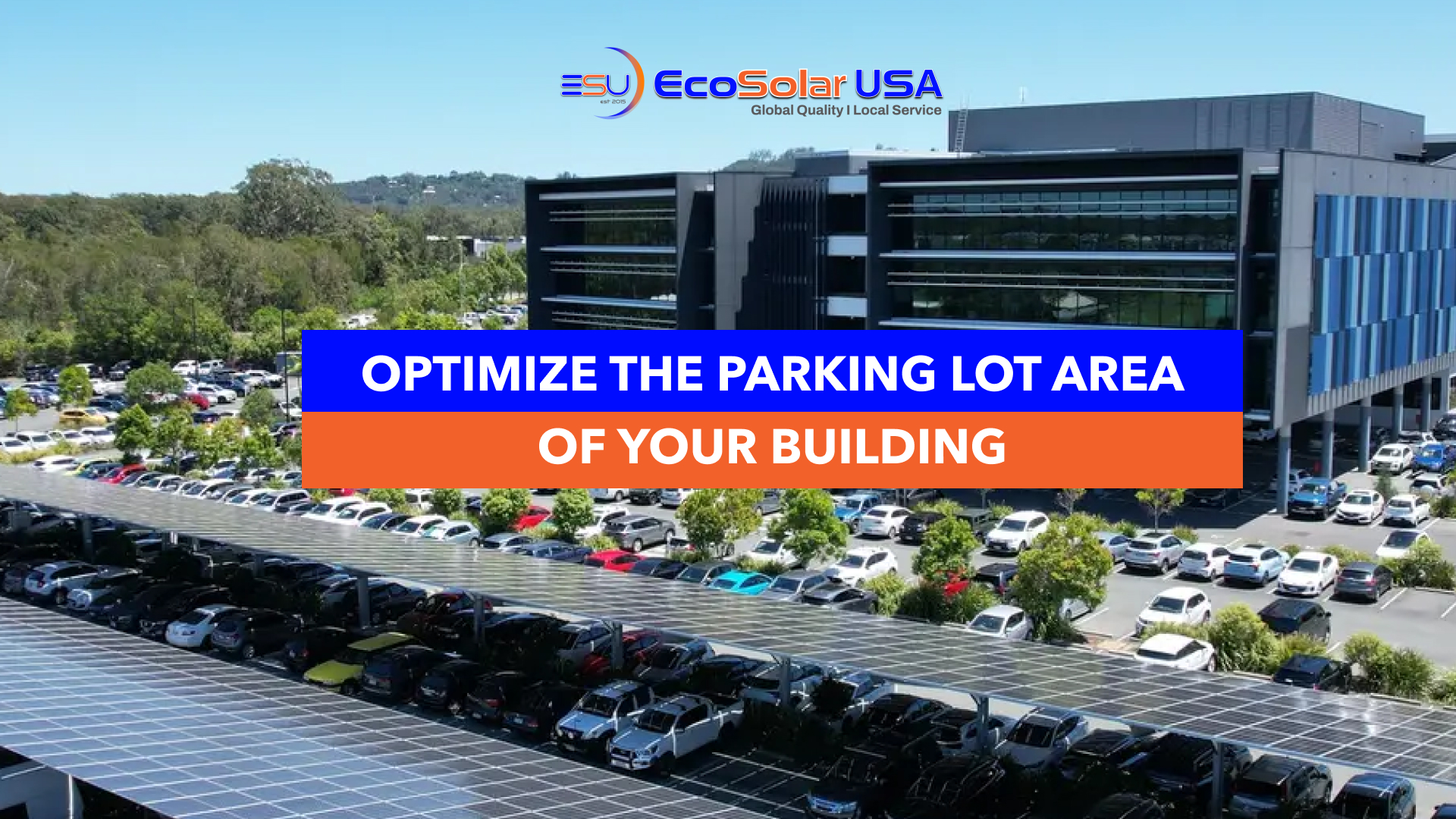
Switching to solar is more than a trend — it’s a smart investment in long-term savings, energy independence, and sustainability. Whether you live in California or Texas, understanding how solar systems work (even in cloudy or rainy weather), how new laws like the Big Beautiful Bill affect your tax credits, and how net metering helps you save can help you make the most informed decision.
☀️ How a Solar System Works for Your Home
Here’s how your home solar setup generates and uses energy:
- Solar panels absorb sunlight — even on cloudy days.
- The panels convert sunlight into direct current (DC) electricity.
- The inverter changes DC to alternating current (AC) — the electricity your home appliances use.
- Your home uses this power first. If you generate more than you use, it goes to the grid.
- Net metering (explained later) gives you credit for excess energy.
- Optional battery storage keeps unused power for night or cloudy days.
🌧️ How Solar Works in the Rainy or Cloudy Season
Many homeowners wonder: “Does solar still work when it rains or during cloudy days?” The short answer: Yes — just at reduced output.
- Solar panels don’t need direct sunlight — they capture diffused sunlight through clouds.
- On a rainy or overcast day, your panels may still produce 25%–60% of their normal capacity.
- If your home is connected to the grid, your system automatically draws from the grid to cover any shortfall.
- Over the year, your net production balances out — sunny summer days offset cloudy winter days.
✅ Pro tip: In California, mild winter rain actually helps clean the panels, removing dust and improving performance. In Texas, scattered storms don’t significantly affect annual production since the state gets 250–280 sunny days per year.
If you have a battery system, it stores excess energy from sunny days to power your home when sunlight is limited — keeping your lights on and bills low even in stormy weather.
Diagram: How Solar Works in All Seasons
| Season | Sunlight Condition | Energy Production | System Action |
| Summer | Strong direct sunlight | 100% output | Excess energy goes to grid/battery |
| Fall | Mild sunlight, some clouds | 70–80% | Still strong generation |
| Winter | Shorter days, diffused sunlight | 40–60% | Grid or battery supplements power |
| Rainy/Cloudy Days | Low light but active | 25–50% | Panels still generate, grid fills in gaps |
🏛️ The Big Beautiful Bill & Solar Tax Credit (Important Update)
The One Big Beautiful Bill (H.R. 1), passed in 2025, includes major changes to the federal solar tax credit (Residential Clean Energy Credit).
- The 30% tax credit is still active until December 31, 2025.
- After 2025, the residential solar tax credit ends, meaning homeowners will lose that significant incentive.
- Projects must be installed and operational before that deadline to qualify.
👉 This means 2025 is your last full year to take advantage of this 30% federal solar incentive — worth thousands of dollars in savings.
(Source: EcoFlow Blog, Darrow Everett LLP)
📈 Rising Electricity Rates in California & Texas
California
- Average residential electricity rate: 31.79 ¢/kWh — nearly 2× higher than the U.S. average.
- Rates rose 82%–110% over the past decade and are expected to keep climbing.
- New fixed “income-based charges” coming in 2025 mean higher base fees for most households.
(Center for Jobs, CalMatters)
Texas
- Average residential rate: 15.47 ¢/kWh as of 2025 — up from ~12 ¢ in 2021.
- Texas’s summer heat waves have increased grid demand, pushing prices higher each year.
(Native Solar)
Solar helps you lock in your electricity rate for 25+ years, insulating your household budget from these rising costs.
🔋 Solar vs. Generator: Which Is Better for Homeowners?
| Feature | Solar System | Traditional Generator |
| Energy Source | Sunlight (free) | Gas/Diesel (costly) |
| Emissions | Zero | CO₂ + noise |
| Maintenance | Minimal | Frequent oil/fuel service |
| Power Duration | Daytime (plus battery backup) | Continuous (with fuel) |
| Long-Term ROI | High | None (ongoing expense) |
Verdict: Solar provides long-term savings and clean power. Generators are good short-term backups but costly and polluting for everyday use. The best setup for homeowners: solar + battery, with an optional small generator for extended outages.
⚙️ How Solar Powers Your Main Residence
Installing solar on your main home does more than reduce your bill:
- It powers lighting, appliances, HVAC, and electric vehicles directly from sunlight.
- During the day, you rely mostly on solar energy, reducing grid dependency.
- At night, the system switches to the grid or battery storage, ensuring 24/7 supply.
- With smart inverters, you can monitor your energy flow, track savings, and control usage remotely.
In most cases, homeowners can cover 70%–100% of their annual energy needs with a well-designed system.
🔁 Understanding Net Metering (and Net Billing)
Net metering lets you earn credits for the extra electricity your solar system sends to the grid.
These credits offset your usage at night or during cloudy days.
- California (NEM 3.0): New systems now earn credit based on avoided cost rates (4–8 ¢/kWh).
- Texas: Utilities offer solar “buyback” programs that pay for exported energy.
Even with these changes, smart system design + a battery ensures you maximize your solar savings.
Diagram: Net Metering in Action
☀️ Daytime → Solar produces → Home uses power → Excess sent to grid → Earn credits
🌙 Night → Home uses grid → Credits reduce your bill
📊 Example Solar Savings in California & Texas
| System Size | Annual Output (kWh) | Estimated Bill Offset | 25-Year Savings | Payback Period |
| 6 kW | 8,760 | 80–90% | $50,000+ | ~5–6 years |
| 10 kW | 14,600 | 90–100% | $80,000+ | ~4–5 years |
| 12 kW | 17,500 | 100%+ | $95,000+ | ~4 years |
💬 Final Thoughts
Even in the rainy season, solar panels continue to work — and across California and Texas, they provide unbeatable long-term protection from volatile electricity costs.
With the Big Beautiful Bill set to end the 30% solar tax credit after 2025, there’s never been a better time to go solar.
🌤️ Let your home shine — powered by the sun.
Contact Eco Solar USA today for a free consultation and customized quote.



